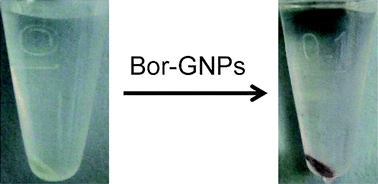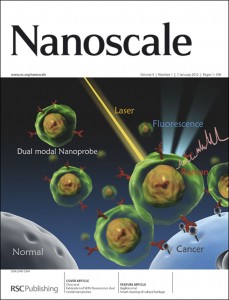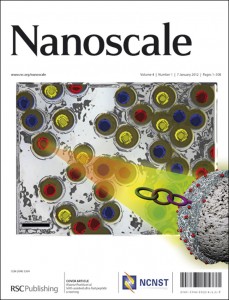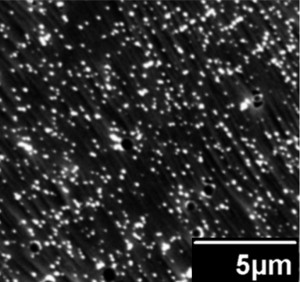This month sees the following articles in Nanoscale that are in the top ten most accessed for November:
Multifunctional composite core-shell nanoparticles
Suying Wei, Qiang Wang, Jiahua Zhu, Luyi Sun, Hongfei Lin and Zhanhu Guo
Nanoscale, 2011, 3, 4474-4502
DOI: 10.1039/C1NR11000D
Gold nanoparticles: preparation, properties, and applications in bionanotechnology
Yi-Cheun Yeh, Brian Creran and Vincent M. Rotello
Nanoscale, 2012, Advance Article
DOI: 10.1039/C1NR11188D
Nano active materials for lithium-ion batteries
Yonggang Wang, Huiqiao Li, Ping He, Eiji Hosono and Haoshen Zhou
Nanoscale, 2010, 2, 1294-1305
DOI: 10.1039/C0NR00068J
Graphene edges: a review of their fabrication and characterization
Xiaoting Jia, Jessica Campos-Delgado, Mauricio Terrones, Vincent Meunier and Mildred S. Dresselhaus
Nanoscale, 2011, 3, 86-95
DOI: 10.1039/C0NR00600A
3D-patterned polymer brush surfaces
Xuechang Zhou, Xuqing Liu, Zhuang Xie and Zijian Zheng
Nanoscale, 2011, 3, 4929-4939
DOI: 10.1039/C1NR11238D
The role of nanomaterials in redox-based supercapacitors for next generation energy storage devices
Xin Zhao, Beatriz Mendoza Sánchez, Peter J. Dobson and Patrick S. Grant
Nanoscale, 2011, 3, 839-855
DOI: 10.1039/C0NR00594K
Highly dispersed Fe3O4 nanosheets on one-dimensional carbon nanofibers: Synthesis, formation mechanism, and electrochemical performance as supercapacitor electrode materials
Jingbo Mu, Bin Chen, Zengcai Guo, Mingyi Zhang, Zhenyi Zhang, Peng Zhang, Changlu Shao and Yichun Liu
Nanoscale, 2011, 3, 5034-5040
DOI: 10.1039/C1NR10972C
Li ion battery materials with core?shell nanostructures
Liwei Su, Yu Jing and Zhen Zhou
Nanoscale, 2011, 3, 3967-3983
DOI: 10.1039/C1NR10550G
Graphene: nanoscale processing and recent applications
László P. Biró, Péter Nemes-Incze and Philippe Lambin
Nanoscale, 2012, Advance Article
DOI: 10.1039/C1NR11067E
2D materials: to graphene and beyond
Rubén Mas-Ballesté, Cristina Gómez-Navarro, Julio Gómez-Herrero and Félix Zamora
Nanoscale, 2011, 3, 20-30
DOI: 10.1039/C0NR00323A
Why not take a look at the articles today and blog your thoughts and comments below.
Fancy submitting an article to Nanoscale? Then why not submit to us today!











 HOT Nanoscale Communication
HOT Nanoscale Communication






